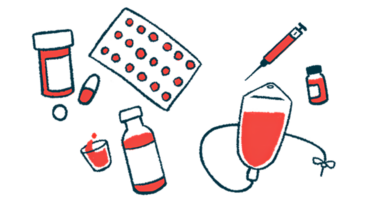Use of under-the-skin efgartigimod now approved for gMG in Japan
Therapy known as Vyvgart Hytrulo in US will be marketed as Vyvdura in Japan
An under-the-skin or subcutaneous injection formulation of efgartigimod has been approved in Japan for use by adults with generalized myasthenia gravis (gMG) who do not sufficiently respond to first-line treatment with steroids or non-steroidal immunosuppressive therapies.
In Japan, the now-approved therapy — efgartigimod alfa and hyaluronidase-qvfc — will be marketed under the brand name Vyvdura, according to its developer, Argenx.
It’s a new name for the same formulation: The treatment, approved last year in both the U.S. and the European Union, is marketed as Vyvgart Hytrulo in the U.S. and as Vyvgart SC in Europe.
“Today’s approval of Vyvdura marks a significant milestone for the gMG community in Japan and furthers our commitment to deliver innovative treatments to autoimmune patients globally,” Hermann Strenger, general manager for Argenx Japan, said in a company press release.
New formulation gives gMG patients in Japan another treatment option
MG is caused by self-reactive antibodies that interfere with the communication between nerves and muscle cells, leading to symptoms like muscle weakness and fatigue. Efgartigimod works to reduce the levels of disease-driving antibodies by blocking the activity of neonatal Fc receptor (FcRn), a protein that normally helps stabilize and prevent the degradation of antibodies circulating in the bloodstream.
Efgartigimod is the active agent in Vyvgart, an MG therapy given by intravenous or into-the-vein infusion that had been previously approved for MG in Japan and other markets. The newly approved subcutaneous version was developed with the aim of making treatment more convenient for patients.
“Bringing Vyvdura to Japan means there are now two formulations available for gMG patients, including the possibility to self-inject at home, allowing patients and their healthcare providers to choose the best option to meet their treatment needs,” Strenger said.
The new formulation was developed using ENHANZE, a drug delivery technology from Halozyme, which relies on the use of a proprietary enzyme to break down a major component of skin tissue, facilitating the delivery of injectable medicines.
Bringing Vyvdura to Japan means there are now two formulations available for gMG patients, including the possibility to self-inject at home, allowing patients and their healthcare providers to choose the best option to meet their treatment needs.
“We are pleased that Argenx continues to expand its global reach of ENHANZE-enabled subcutaneous Vyvgart to Japan,” Helen Torley, Halozyme’s president and CEO, said in a separate company press release.
“[This] approval includes the opportunity for patient self-administration of [subcutaneous] Vyvgart with ENHANZE at home, adding an additional treatment option for patients,” Torley added.
Approval of the subcutaneous formulation was based mainly on data from the Phase 3 ADAPT-SC trial (NCT04735432), which tested the subcutaneous version against the previous intravenous formulation in more than 100 adults with gMG.
The results showed that both formulations were comparable in their ability to lower levels of disease-driving antibodies. Similar to the intravenous formulation, the subcutaneous formulation also led to clinically meaningful improvements in multiple scales of symptom and disease severity. The safety profile of both formulations also was identical.







